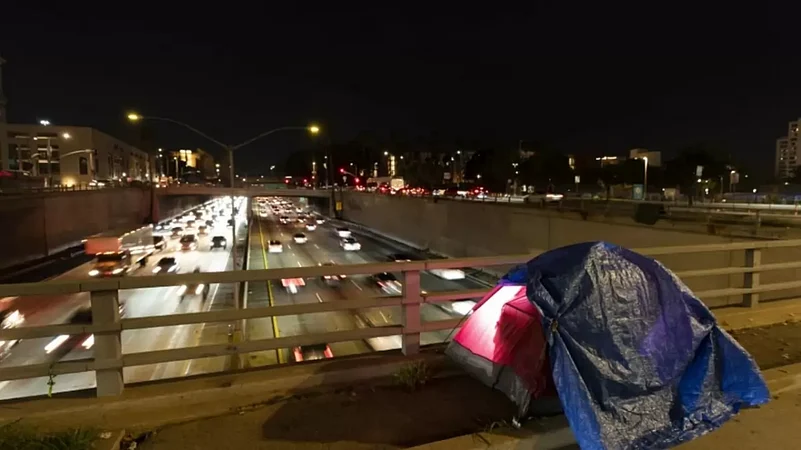The United States is grappling with a concerning surge in homelessness, with federal officials reporting a sharp 12% increase.
The latest figures gathered through the yearly point-in-time survey, reveal that approximately 653,000 people experienced homelessness in January, marking the highest reported level since 2007. This surge, attributed to a combination of skyrocketing rents and a decline in pandemic assistance, paints a grim picture of housing accessibility for many Americans.
The January count indicates a significant rise, breaking a downward trend that had been observed since 2012. Ann Oliva, CEO of the National Alliance to End Homelessness, notes that those on the frontlines of the crisis find this increase unsurprising.
Historical progress and recent setbacks
Looking back to the 2007 survey, the U.S. made steady progress in reducing homelessness for about a decade. The government's focus on increasing investments to house veterans led to a decline from approximately 637,000 in 2010 to about 554,000 in 2017. However, the numbers began to tick up in the 2020 count, reaching about 580,000, and have continued to rise.
Emergency rental assistance and stimulus payments during the COVID-19 pandemic temporarily held off the increase, according to Jeff Olivet, executive director of the U.S. Interagency Council on Homelessness.
“The most significant causes are the shortage of affordable homes and the high cost of housing that have left many Americans living paycheck to paycheck and one crisis away from homelessness,” Olivet said.
Homelessness among individuals increased by nearly 11%, among veterans by 7.4%, and among families with children by 15.5%. Shockingly, people who identify as Black and Hispanic or Latino make up a higher percentage of the homeless population compared to their share in the overall U.S. population.
HUD said that rental housing conditions were “extraordinarily challenging” in 2022, with rents increasing at more than twice the rate of recent years. It noted that the trend has subsided since the January count. Such relief could show benefits when volunteers and housing officials around the country begin the next homeless count in just a few weeks.
Officials also noted that President Joe Biden’s budget for this fiscal year has recommended guaranteed vouchers for low-income veterans and youths aging out of foster care, among other investments designed to reduce homelessness.
Regional Disparities
More than half of the people experiencing homelessness in the country are concentrated in four states: California, New York, Florida, and Washington. While California holds about 28% of the nation's homeless population, its increase was only about half the national rate. New York, on the other hand, saw homelessness rise more than three times the national rate, indicating significant regional variations.
New Hampshire, New Mexico and Colorado along with New York saw the largest percentage increases in homelessness. In all, the number of people experiencing homelessness increased in 41 states and the District of Columbia, and decreased in just nine states.
Dave Giffen, executive director of The Coalition for the Homeless in New York City, said the cost of rental housing soared after the pandemic.
“So when we saw the pandemic-era protections go away, we did start to see homelessness starting to increase again. We saw more people being evicted, housing instability,” Giffen said. “But then all of that got kind of masked by the sudden, very rapid influx of new asylum seekers, and that is a crisis for which the city and state were more unprepared to deal with.”
Meanwhile, some communities have managed to buck the national trend. Chattanooga, Tennessee, for instance, saw a remarkable 49% drop in homelessness from the 2022 count to this year. Other communities, like Dallas, Newark, Essex County, Houston, San Jose, and Tucson, are also cited for their efforts in reducing homelessness through various initiatives.


























